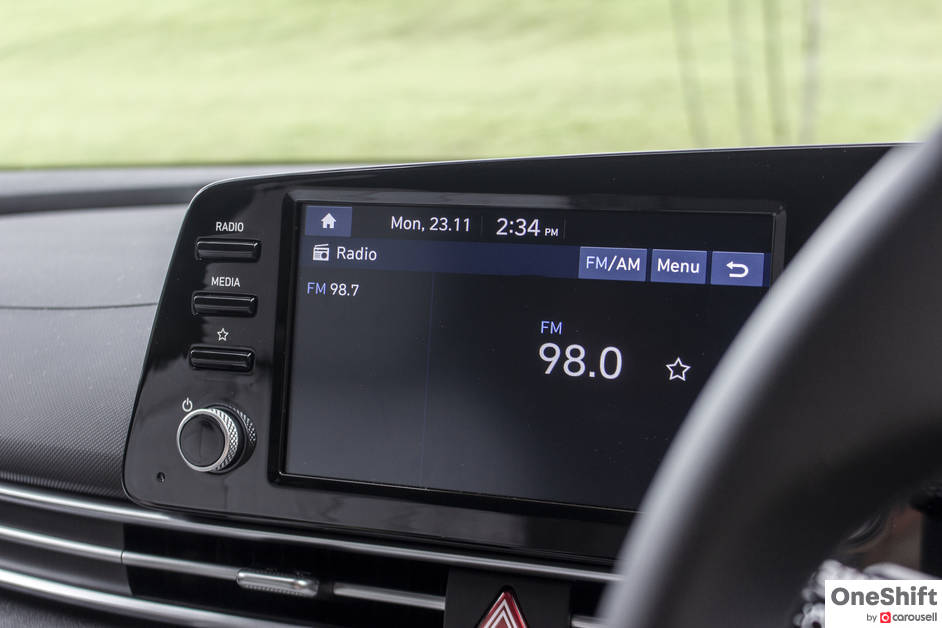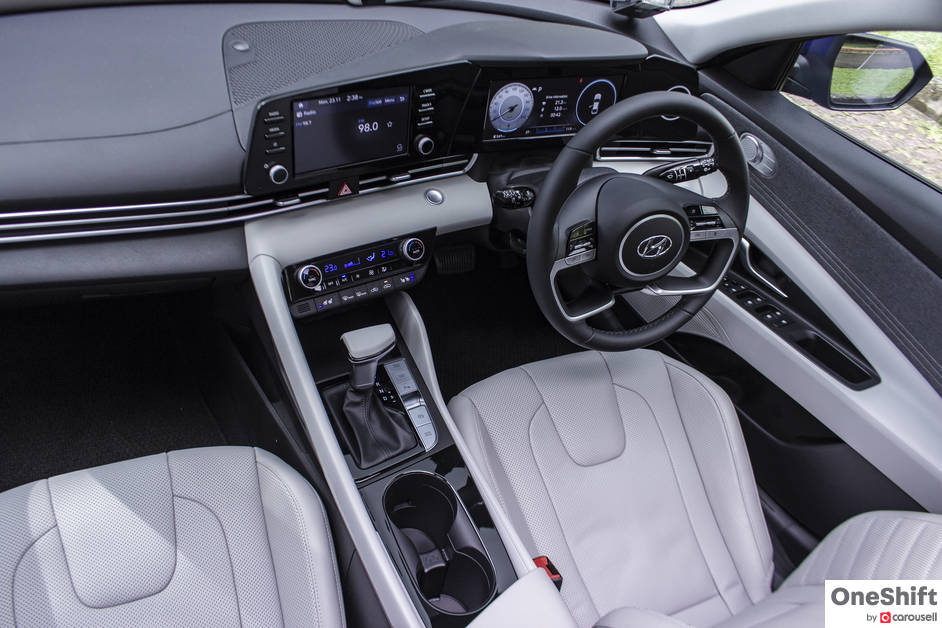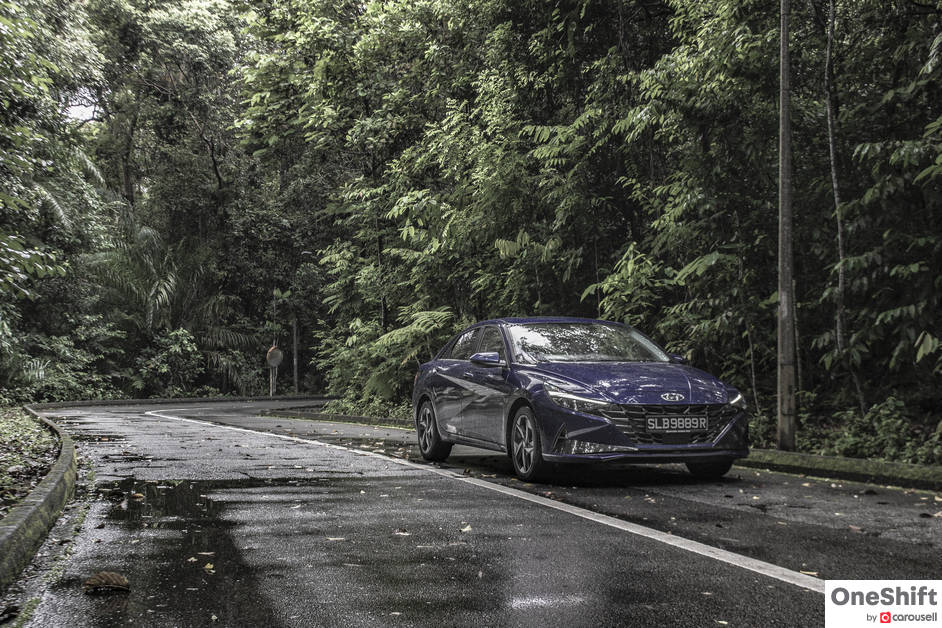Level Up!
The all-new Hyundai Avante has heaps to offer if you are looking for a well-built family sedan


When I was a young boy, and just over a meter, my first brush with a Hyundai was with a compact hatchback called the Pony. While its styling was done by none other than ItalDesign’s legendary Giorgetto Giugiaro, there was little that could hide how crudely it was built. Hyundai back then, leaned heavily on Mitsubishi’s powertrains, with the Pony managing to get around with a 1.2-litre straight-four, which was shared with the Mitsubishi Colt.

While the Pony was Hyundai’s “Peoples Car” more than four decades ago, the Elantra/Avante in recent years has done just the same for many families. And while this compact sedan had always played second fiddle to its Japanese counterparts, it looks like the new Avante (I hope they don’t change the name again this time round) is here to disrupt the game.

The new styling is a bold move, penned by Luc Donckerwolke, of Lamborghini, SEAT and Bentley fame, to set the Avante apart from the competition. The angular theme boasts a massive grille that visually eats into the headlight cluster, and even incorporates the Avante’s indicator lamps. The expressive side profile is either a hit or miss, in what Hyundai has termed “Parametric Dynamics Design”; the result is an aggressive body style that does make the compact sedan stand out among the crowd. I do like the rear treatment, where there is a light strip that spans across, and completing the ‘H’ shaped tail lamps; visually broadening the tail of the sedan.

Overall, the Avante is longer, wider than the car it replaces, and has a wheelbase which edges both the (industry benchmarking) Toyota Corolla and current Honda Civic’s identical 2,700mm by 20mm.

A driver-centric dashboard is miles apart from what it used to look like… miles perhaps like in an aeroplane or even a spaceship. Designers have cleverly worked to visually create a sense of space for the driver, and it is a personal one too; with the white sections of the dash, forming an enclosed space. One thing I must stress here is the Avante’s improvement in quality. The dash is among the best I have seen in a compact sedan, a high standard of quality I dare say, is a celebration of what Hyundai is today.

Both the Elite and S model cars now get a new digital 10.25” instrument cluster, while the base car still makes do with analogue dials, and a central 4.2” display. All Avante models are equipped with an 8” LCD infotainment screen, with both Apple and Android devices wirelessly supported. Up to two Bluetooth devices can also be linked to the infotainment at any one time, one which gets priority with the ability to make calls, while you can share your playlist with the second device. The mid-tier and higher-spec Avante cars are also equipped with wireless charges for your mobile phone.

Speaking about mobile phones, the dashboard has a right-side blank panel which in another world, houses the drive mode switch in the N Line model (not available here). This has been retained by Hyundai for visual balance, and as a place for you to mount your mobile phone holder. There is also an adjustable central pair of cup holders, which are deep enough to swallow that extra large cup of bubble tea.

The Avante Elite model does have my favourite Korean car feature, something which you will usually find in (much) higher-end cars. Its ventilated front seats are best appreciated on hot days, especially when starting up, after the car has been parked under the sun for a while.

While the Avante may be a compact family sedan, it does boast best-in-class rear legroom, with up to 964mm to accommodate adult passengers with ease, though its sloping roofline does reduce some headroom. The car’s wider track also translates into slightly improved shoulder room for both front and rear passengers.
Cargo space at 474 litres, is smaller than that of the Honda Civic’s 519 litres, but beats the 450 litres offered by the Toyota Corolla. The rear seats can fold to offer added space, but many-a-time in our Asian sedans, there is often a kerb left by the seat.

Like Hyundai’s smallest SUV, the Venue which we recently tested, the Avante gets their new Smartstream Gamma II 1.6 litre four cylinder engine. The new unit features dual port injection and Dual CVVT (variable valve timing).

Power and torque numbers are decent, with 123hp and 154Nm on tap, while drive is via Hyundai’s very own IVT transmission, essentially a CVT. But unlike most CVT units which rely on a pushbelt, Hyundai has gone with a chain for theirs. The main weakness in most CVT transmissions is their sluggish performance when taking off from the lights, as they usually need a little coaxing off the line. The IVT on the other hand, does quite a fine job, having a firm delivery, while the smoothness which is what is built for, is really quite excellent.

While its performance does level with most same-segment cars, delivering a 10.4 second century sprint, turbocharged models like the Civic 1.5 Turbo (8.5 seconds) and Skoda Octavia (8.2 seconds) are quicker. But performance is not the main draw with the Avante, but refinement is key here.
On the road, you will benefit from some good sound insulation, and the creaminess of the IVT does make a notable difference in the drive, be it on the highway, or even during city driving.

During highway runs, I did manage about 18.1km/l, which is superb if you are someone who is fussy about your fuel economy. In combined start-stop and highway situations, my consumption averaged 16.2km/l, which I must say is still very good in my opinion.
The Avante may sit on a simple MacPherson front and Torsion rear setup, but handling is pretty spot-on. Even with its family car intentions, the compact sedan does take to the bends with a spot of brisk driving rather well, where the previous car would wallow around. A small thing, but the A pillars do get in the way of your view around tighter bends.

The 7th generation car has also solved one of my gripes about smaller Korean cars, which are their dubious “crap in pants” brakes. The front and rear discs in this Avante actually offer impressively good stopping power.
The Elite and S trim cars are equipped with some high-tech advanced driver aids. Both cars come with Forward Collision Avoidance Assist, which is able to recognise other motor vehicles, pedestrians and even cyclists, and react to the situation. Lane Keep Assist, which helps you keep your vehicle in its lane, is now complemented with Lane Following Assist, which guides the car when lane markers are unclear; this is done by following the path of the vehicle in-front.

The Elite model is also equipped with Smart Cruise Control, which adapts to traffic situations, and keeps the car a safe distance from the vehicle in-front. Additionally, the system is designed to bring the car to a stop if needed. Ideal for our local highway conditions.
For those who believe that the trusty sedan is still the way to go, and wouldn’t want to fork out the unnecessary extra just for similar cabin space in an SUV, the Avante is an impressive offering.

The Elite model we tested here retails for S$104,999*, which is quite on-par with its Japanese counterparts. Not cheap at all, but you are getting plenty of tech and safety features, and build quality is truly top-notch. So yes, there is more car for you to “pony up” for, as compared to before, but the new Avante is quite a fine car to begin with.
And I will leave you with this. Could you imagine that Hyundai was a manufacturer that humbly began building its very first cars in a factory with floors made of hardened dirt? The Avante embodies what Hyundai has become. Modern, bold, but most of all, a brand that looks to become a guiding light in the automotive industry.

*Accurate on 1 December 2020
Credits: Words and Photos by Clifford Chow







- Convenient and Hassle-Free
- Consumer Protection
Transparent Process
With No Obligation


Get the Best Price for your used car
from 500+ dealers in 24 hours








